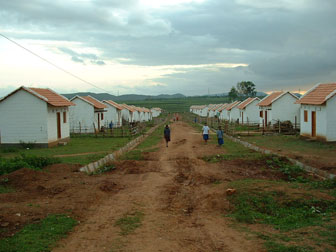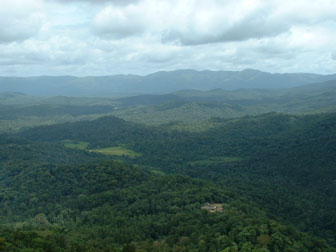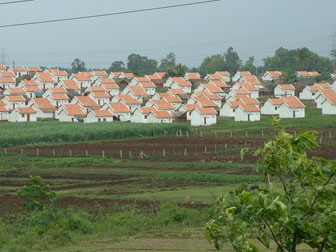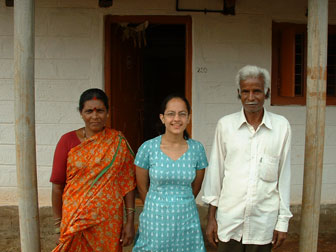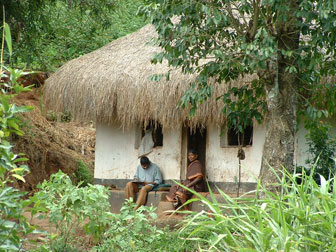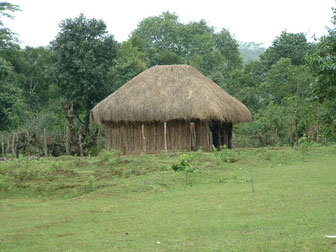Successful relocation of villagers from wildlife sanctuary
Successful relocation of villagers from wildlife sanctuary
Jeremy Hance, special to mongabay.com
September 29, 2007
|
|
The Bhadra Wildlife Sanctuary is located in India’s Western Ghats mountain range. The sanctuary contains some of India’s most celebrated and endangered wildlife, including the Bengal Tiger and Asian Elephant. Other mammals include the Guar, Sambar, Slender Loris, Chital, and Leopard. The sanctuary is also rich in bird species (nearly 300 have been recorded) and butterflies. As well, the Bhadra Wildlife Sanctuary is one of twenty-seven reserves that are apart of Project Tiger: a program to save’s India’s last tigers and their habitats. In addition to containing some of India’s richest biodiversity (recently India has applied for the Western Ghats to gain World Heritage status), the sanctuary was at one time home to thirteen villages that increasingly affected, and were affected by, their protected surroundings. In 2002 eleven of these thirteen villages were relocated to two towns outside of the sanctuary.
|
|
The idea of relocation began in the 1970s when several villagers petitioned the government to be relocated. Their reasons were many: in the sanctuary livestock was often prey to leopard and tiger and crops destroyed by elephants. The villages had no electricity or communications and little access to running water. The closest health center was only accessible by bus, and the stop was miles from the villages. Attendance at school was poor due to absent teachers and a 10 km walk. Moving outside of the park would mean electricity, running water, easy access to hospitals and schools, even proximity to urban areas. Most villagers felt that as long as they were adequately compensated for the transition the relocation would be a chance at a better life. It took over twenty years to finally secure the funds to move 419 households.
In general relocation from a preserve is a very controversial issue. It implies (perhaps unfairly) the importance of the sanctuary over human needs. With this concern in mind Krithi Karanth undertook the task of measuring the success of the relocation in the people’s eyes. Several issues have troubled and tainted relocations in the past: loss of heritage and culture, economic insecurity, the threat of social domination by the populace they join, and inadequate government aid and resources. To discover what, if any, of these issues applied to the relocation from Bhadra, Ms. Karanth interviewed relocated villagers twice, once in 2002 and again in 2006.
|
|
The villages of Bhadra were not hunter/gatherer societies living off of the forest. Instead, the main occupation was livestock and crops, including coffee and rice. Essentially they were small agricultural communities living in the midst of wilderness. The relocated villages were moved into two different agricultural towns, Kelaguru and M.C. Hali, therefore the villagers did not have to suffer a major shift in their livelihood. Every family was given a housing site, a plot of land for cultivation, and an allowance for the first six months. When interviewed in 2002 most of the relocated were satisfied with the move: 70% of those in M.C. Hali and 81% in Kalguru felt the relocation was a success. By 2006 the numbers had fallen to 53% in M.C. Hal and 41% in Kalguru. To explain the difference, Krithi Karnath writes: “There was a tendency among people to emphasize the negatives aspects during the 2006 survey. Their dissatisfaction focused mainly on the inadequate financial compensation provided. Their statements regarding the amount of compensation provided to them often contradicted the official government records. I observed that in 2002, people’s statements were more forthright and less influenced by external views. In 2006, people’s opinions appeared influenced by living in the new village society”. Some complaints—besides government financial support—included the shift between working with crops and livestock to focusing on agriculture (many homes no longer owned livestock), transitioning to the new society in town, and availability of work. However, most villagers stated that their assets and economic situation had improved greatly. As well, moving to new towns allowed for a societal shift. Those with larger wealth and power in the villages found themselves facing a more equitable situation. Lower caste villagers found their prospects bettered by more opportunity and less discrimination. The government of India, many of the relocated, and Ms. Karanth believed that, though not perfect, the relocation was a success.
|
|
Krithi Karanth found several reasons why this relocation was a “step in the right direction” compared to ones in the past. First, it was primarily voluntary. Secondly, many NGO’s including Bhadra Wildlife Conservation Trust, Wildlife First!, and Nature Conservation Guild, became involved throughout the process and their pressure made certain the government kept its promises. Finally, the compensation packages and aid provided to the villagers of Bhadra was far more than usually allotted for such projects. Ms. Karanth recommends the project “as a model for relocation and resettlement”.
It is believed that the impact of the relocation on Bhadra’s environment will be extremely positive. Removal of livestock and crops will allow additional space for feeding grounds and forest. Trees will no longer be chopped down for firewood, and occurrences of poaching and fishing (sometimes involving dynamite) should drop dramatically. Ms. Karanth believes that both plant and animal species will benefit greatly from the relocation. Two villages remain in the park, but they are at the edges and have better access to outside services.
|
|
As India’s population and material wealth grows, keeping such reserves as Bhadra Wildlife Sanctuary free from human pressure is increasingly important. Krithi Karanth puts it very succinctly: “In India only 3-5% total land area are protected under wildlife reserves—most of the country’s biodiversity remains in these places. Many of these reserves are under huge pressures from people who live around them and inside them. Relocation and resettlement if done fairly and properly will help protect the last places left for many species.”
Citation: Krithi K. Karanth (2007). Making resettlement work: The case of India’s Bhadra Wildlife Sanctuary. Biological Conservation, Issue 139, III-IV
